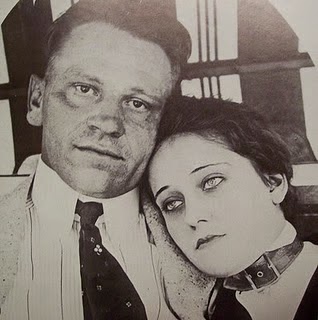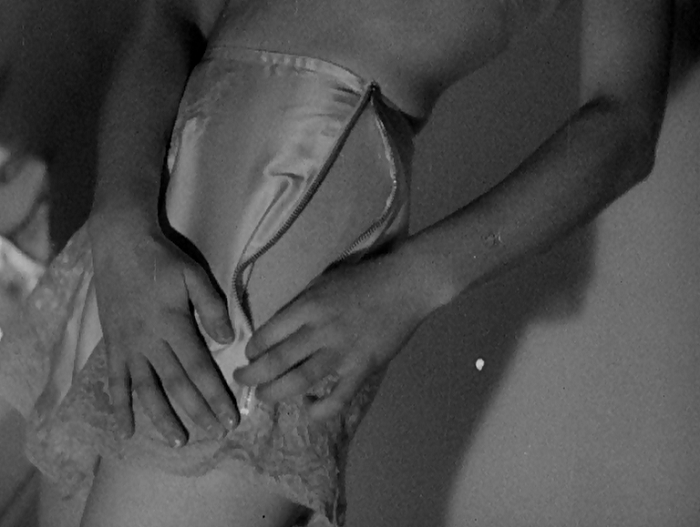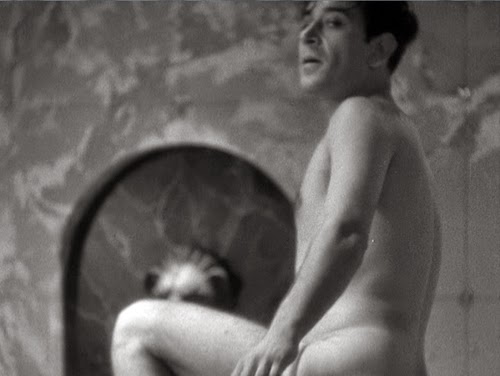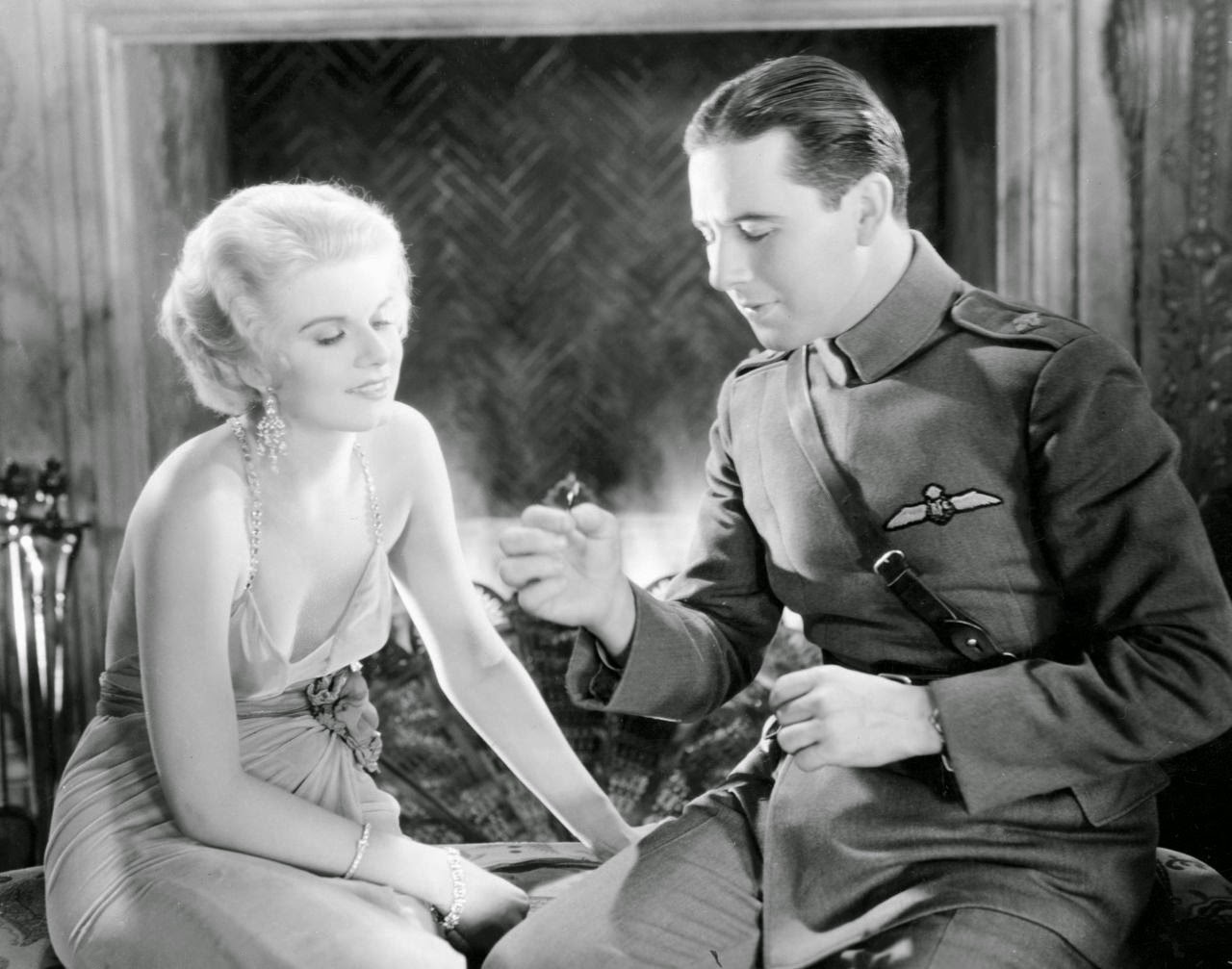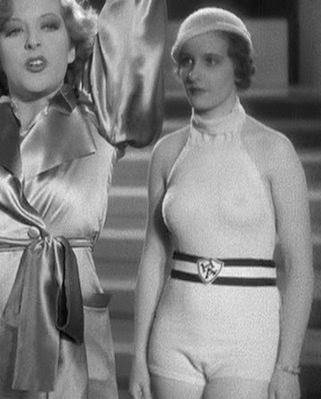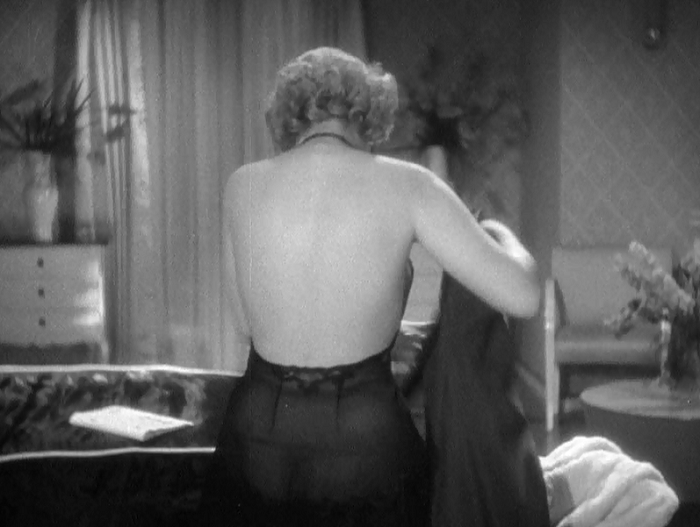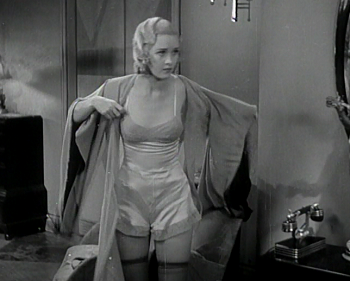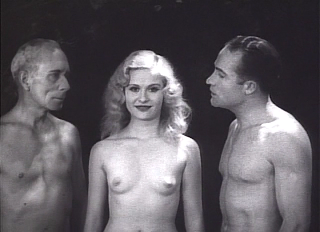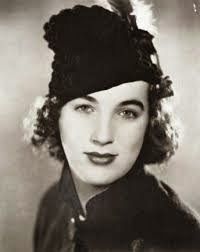Running from 26 September – 2 November 2014, the Forbidden Hollywood: The Wild Days of Pre-Code Cinema festival is a celebration of the best films of the era. Making use of a rare selection of prints from museums and collections all over the world, it is not to be missed. Unfortunately, the collection is only screening at Brisbane at Australian Cinémathèque, Gallery of Modern Art (GOMA). The films will be screening during the months of October and November and best of all its free! All the film information and timings are below:QAGOMA 50+ After Hours | Screening and Talk
Forbidden Hollywood: Jewel Robbery 1932
5.30pm Thursday 30 October | Cinema A, GOMA
Following a screening of the high-spirited Jewel Robbery 1932 (68 mins), join Michael Brooks from Brisbane’s Cine Retro Film Society, in conversation with ‘Forbidden Hollywood: The Wild Days of pre-Code Cinema’ curator Amanda Slack-Smith, Assistant Curator, Australian Cinémathèque, QAGOMA for insights into this fascinating period of Hollywood cinema. Free, bookings required. For more information on how to book for this program, please visit QAGOMA 50+. SCHEDULE
SEPTEMBER 2014
26.09.14 l 6.00pm l Alfred E Green Baby Face 1933
26.09.14 l 7.40pm l Ernst Lubitsch Trouble in Paradise 1932
27.09.14 l 1.00pm l Jack Conway Red-Headed Woman 1932
27.09.14 l 3.00pm l Clarence Brown Possessed 1931
28.09.14 l 1.30pm l John Francis Dillon Call Her Savage 1932
28.09.14 l 3.30pm l Victor Fleming Red Dust 1932
OCTOBER 2014
1.10.14 l 6.00pm l Clarence Brown – Possessed 1931
03.10.14 l 6.00pm l Josef von Sternberg – Shanghai Express 1932
03.10.14 l 7.45pm l Josef von Sternberg – Blonde Venus 1932
04.10.14 l 1.00pm l Ernst Lubitsch – Trouble in Paradise 1932
04.10.14 l 3.00pm l Ernst Lubitsch – Design for Living 1933
05.10.14 l 1.00pm l Frank Capra – The Bitter Tea of General Yen 1933
05.10.14 l 3.00pm l Alfred E Green – Baby Face 1933
08.10.14 l 6.00pm l Ernst Lubitsch – Design for Living 1933
10.10.14 l 6.00pm l Mervyn LeRoy – Little Caesar 1931
10.10.14 l 7.30pm l Howard Hawks, Richard Rosson – Scarface1932
11.10.14 l 1.00pm l Jack Conway – Red-Headed Woman 1932
11.10.14 l 2.30pm l Victor Fleming – Red Dust 1932 12.10.14 l 1.00pm l Josef von Sternberg – Blonde Venus 1932
12.10.14 l 3.00pm l Josef von Sternberg – Shanghai Express 1932
15.10.14 l 6.00pm l Frank Capra – The Bitter Tea of General Yen 1933
17.10.14 l 6.00pm l Michael Curtiz – Female 1933
17.10.14 l 7.15pm l William Dieterle – Jewel Robbery 1932
18.10.14 l 1.00pm l Howard Hawks, Richard Rosson – Scarface 1932
18.10.14 l 3.00pm l Mervyn LeRoy – Little Caesar 1931
19.10.14 l 1.00pm l Lowell Sherman – She Done Him Wrong 1933
19.10.14 l 2.30pm l Wesley Ruggles – I'm No Angel 1933
22.10.14 l 6.00pm l Wesley Ruggles – I'm No Angel 1933
24.10.14 l 6.00pm l William A Wellman – The Public Enemy 1931
24.10.14 l 7.30pm l Mervyn LeRoy – Gold Diggers of 1933 1933
25.10.14 l 1.00pm l Lloyd Bacon – 42nd Street 1933
25.10.14 l 3.00pm l Mervyn LeRoy – Gold Diggers of 1933 1933
26.10.14 l 1.00pm l William Dieterle – Jewel Robbery 1932
26.10.14 l 2.30pm l Michael Curtiz – Female 1933
29.10.14 l 6.00pm l Lowell Sherman – She Done Him Wrong 1933
NOVEMBER 2014
01.11.14 l 1.00pm l I Am a Fugitive from a Chain Gang 1932
01.11.14 l 3.00pm l Charles Brabin – The Beast of the City 1932
02.11.14 l 1.00pm l Dorothy Arzner – Christopher Strong 1933
35MM, BLACK AND WHITE, MONO, 79 MINUTES, USA, ENGLISH / DIRECTOR: MERVYN LEROY / PRODUCERS: HAL WALLIS, DARRYL F ZANUCK / SCRIPT: FRANCIS FARAGOH, ROBERT N LEE / BASED ON THE W R BURNETT NOVEL ‘LITTLE CAESAR’ 1929 / CINEMATOGRAPHY: TONY GAUDIO / EDITOR: RAY CURTISS / CAST: EDWARD G ROBINSON, DOUGLAS FAIRBANKS JR, GLENDA FARRALL, WILLIAM COLLIER JR / MUSIC: ERNO RAPEE / PRODUCTION COMPANY: FIRST NATIONAL PICTURES (WARNER BROS PICTURES) / PRINT SOURCE: PRESERVED BY THE LIBRARY OF CONGRESS / RIGHTS: PARK CIRCUS
"Little Caesar was the inspiration of Warner Brothers production chief Darryl F Zanuck, who in 1931 decided to exploit current headlines sensationalizing gangster activities. On seeing the financial success of Little Caesar, the studio continued to capitalize on the style. Little Caesar was a product of the studio factory, but because it was made before the gangster formula had rigidified, its terse and economic style has a raw power which isn't lost on audiences today. Robinson's Caesar Enrico ('Rico') Bandello set the standard by which all later gangsters rose and fell." Kathy Geritz, Pacific Film Archive.
The Public Enemy 1931 PG
35MM, BLACK AND WHITE, MONO, 83 MINUTES, USA, ENGLISH / DIRECTOR: WILLIAM A WELLMAN / PRODUCER: DARRYL F ZANUCK / SCRIPT: KUBEC GLASMON, JOHN BRIGHT, HARVEY THEW / CINEMATOGRAPHY: DEV JENNINGS / EDITOR: EDWARD MCDERMOTT / CAST: JAMES CAGNEY, JEAN HARLOW, EDDIE WOODS, MAE CLARK / MUSIC: DAVID MENDOZA / PRODUCTION COMPANY: WARNER BROS PICTURES / PRINT SOURCE/RIGHTS: ROADSHOW ENTERTAINEMENT 'In the film that made Cagney a star, William Wellman's genre classic chronicles 'Public Enemy' Tom Powers's rise from slum kid to adolescent hood and finally to big-time bootlegger. The prologue deplored society's glorification of the gangster, but Powers's cocky arrogance and callous violence fascinated audiences. His ruthless pursuit of eminence, unrestrained by law and order, was after all another version (albeit corrupt) of the American success story. Socially irredeemable, Powers earned his title, just as viciously shooting a man as a horse, brutally smashing a grapefruit in a woman's face, strong-arming beer hall owners, and even disappointing his mother. Public Enemy was unusual among gangster films in its detailing of immigrant family life and urban environment, and its depiction of a life of crime as a reaction to Depression society with few opportunities for (lawful) success.' Kathy Geritz, Pacific Film Archive
35MM, BLACK AND WHITE, MONO, 76 MINUTES, USA, ENGLISH, FRENCH, GERMAN / DIRECTOR: CLARENCE BROWN / PRODUCERS: IRVING THALBERG, CLARENCE BROWN, HARRY RAPF / SCRIPT: EDGAR SELWYN, LENORE J COFFEE / CINEMATOGRAPHY: OLIVER T MARSH / EDITOR: WILLIAM LEVANWAY / CAST: JOAN CRAWFORD, CLARK GABLE, WALLACE FORD, FRANK CONROY / MUSIC: DOUGLAS SHEARER / PRODUCTION COMPANY: METRO-GOLDWYN-MAYER / PRINT SOURCE: FROM THE COLLECTION OF THE GEORGE EASTMAN HOUSE / RIGHTS: HOLLYWOOD CLASSICS
‘Crawford portrays a small-town factory girl who hops a train for New York, leaving her boyfriend and illusions behind at the station; both will find and haunt her before the story is played out. Possessedis a great example of how the studio system paid off artistically: it was not the combined names, but the combined talents of the stars, Clark Gable and Crawford, and the director, Clarence Brown, that raised the film from its melodramatic roots to achieve a lasting integrity and elegance.’ Pacific Film Archive
35MM, BLACK AND WHITE, MONO, 82 MINUTES, USA, ENGLISH / DIRECTOR: JOSEF VON STERNBERG / PRODUCER: ADOLPH ZUKOR / SCRIPT: JULES FURTHMAN, HARRY HERVEY / CINEMATOGRAPHY: LEE GARMES, JAMES WONG HOWE / EDITOR: FRANK SULLIVAN / CAST: MARLENE DIETRICH, CLIVE BROOK, ANNA MAY WONG, WARNER OLAND / MUSIC: W FRANKE HARLING / PRODUCTION COMPANY: PARAMOUNT PUBLIX / PRINT SOURCE/RIGHTS: UNIVERSAL PICTURES 'The highly atmospheric sets, coupled with photographer Lee Garmes’ famed soft-focus shots, give Shanghai Express a dream-like quality that is highly appropriate for a film about China that was filmed largely in the San Fernando Valley. Sternberg himself said, “I thought the canvas of China as evoked by my imagination quite effective. The actual Shanghai Express, when I took it out of Peking, was thoroughly unlike the train I invented.” On this train, Dietrich tells Clive Brook, “It took more than one man to change my name to Shanghai Lilly,” throwing his five year torch for her into an ambivalence that doesn’t stop rocking until the train stops rolling. Sternberg’s most colorful and langorous film, Shanghai Express is a kind of Grand Hotel and Stagecoach combined, in which the hierarchy of characters (including Anna May Wong at her sultriest) develops against the bombardment from without by revolutionary troops. But being single-mindlessly Sternberg, it is above all a paean to unconditional love, the importance of which is only underscored by its improbability.' Pacific Film Archive
The Beast of the City 1932 Ages 18+ 35MM, BLACK AND WHITE, MONO, 87 MINUTES, USA, ENGLISH / DIRECTOR: CHARLES BRABIN / PRODUCER: HUNT STROMBERG / SCRIPT: JOHN L MAHIN / BASED ON THE W R BURNETT STORY ‘BEAST OF THE CITY’ 1932 / CINEMATOGRAPHY: NORBERT BRODINE / EDITOR: ANNE BAUCHENS / CAST: WALTER HUSTON, JEAN HARLOW, WALLACE FORD, JEAN HERSHOLT / MUSIC: ROBERT SHIRLEY / PRODUCTION COMPANY: METRO-GOLDWYN-MAYER / PRINT SOURCE/RIGHTS: PARK CIRCUS 'Based on a story by W. R. Burnett, one of the most prolific writers of gangster novels and scenarios, The Beast of the City begins with a spiel by President Hoover and ends with a police mow-down of gangland racketeers. In between, a tough, tense story is given added impetus by an interesting play of character types and an unusually detailed depiction of police methods. Walter Huston portrays an honest cop who angers some important people in his attempts to put a suave, powerful racketeer (Jean Hersholt) in the clink. Further obstructions encountered in the line of duty come from his own crooked brother (Wallace Ford) and his brother’s girlfriend (Jean Harlow), who has intimate connections in high places. In The Great Gangster Films, authors Parish and Pitts note, “The Beast of the Citynever attained the public popularity of Metro’s earlier The Secret Sixor Dance, Fools, Dance (both 1931), for it was too uncompromising in its study of gangland versus law enforcer practices, without the usual overdose of romantic interest.”' Pacific Film Archive
35MM, BLACK AND WHITE, MONO, 90 MINUTES, USA, ENGLISH / DIRECTORS: HOWARD HAWKS, RICHARD ROSSON / PRODUCER: HOWARD HUGHES / SCRIPT: BEN HECHT, SETON I MILLER, JOHN L MAHIN, W R BURNETT / BASED ON THE ARMITAGE TRAIL NOVEL ‘SCARFACE’ 1930 / CINEMATOGRAPHY: LEE GARMES, L W O’CONNELL / EDITOR: EDWARD CURTISS / CAST: PAUL MUNI, ANN DVORAK, KAREN MORLEY, GEORGE RAFT / MUSIC: ADOLPH TANDLER, GUS ARNHEIM / PRODUCTION COMPANY: THE CADDO COMPANY / PRINT SOURCE: PRESERVED BY THE LIBRARY OF CONGRESS / RIGHTS: UNIVERSAL PICTURES
“Loosely based on the career of Al Capone, Scarfacewas released as ‘the gangster film to end all gangster films,’ but in fact triggered off a whole series of imitations. It is Hawks’ best prewar film.... Its violent visual style, its cutting, and its cynicism and sense of character are as arresting today as they were then. Screenwriter Ben Hecht and Hawks create a world for Scarface and his mob that is not unlike the court of the Borgias in Renaissance Italy with similar intrigues, double crosses, and gratuitous murders. Scarface himself is more arrogant and stupid than his counterpart in Von Sternberg’s Underworld and gets to the top only through ambition and the fact that he has what was then a new absolute weapon, the machine-gun. His lieutenant, Little Boy, is characterized by his habit of perpetually flipping a coin, and other mobsters are identified by their own special peculiarities of behavior - a device often imitated in (later) gangster films”. Georges Sadoul, Pacific Film Archive
35MM, BLACK AND WHITE, MONO, 79 MINUTES, USA, ENGLISH, FRENCH / DIRECTOR: JACK CONWAY / PRODUCER: PAUL BERN / SCRIPT: ANITA LOOS / BASED ON THE BOOK BY KATHARINE BRUSH 'RED-HEADED WOMAN' 1931 / CINEMATOGRAPHY: HAROLD ROSSON / EDITOR: BLANCHE SEWELL / CAST: JEAN HARLOW, CHESTER MORRIS / PRODUCTION COMPANY: METRO-GOLDWYN-MAYER / PRINT SOURCE/RIGHTS: HOLLYWOOD CLASSICS
‘The first of Jean Harlow's starring roles had her bedding her way from poor girl to rich wife and then even richer liaisons. Red-Headed Woman features Harlow at her most hilariously wanton. Unfettered by scruples or brassiere, this most avid of gold diggers launches a relentless campaign to wrap her charms around her married employer. Red Headed Womanwas a target of censorship even in this relatively forgiving era. Anita Loos's script is blithely cynical about the exchange of sex for privilege, and blunt about the sometimes brutal power of lust (when her lover slaps her, Lil says, "do it again, I like it"—so he does). The film's audacity is still jaw-dropping, from the opening dialogue—"Can you see through this?""I'm afraid, you can, dear.""I'll wear it!"—through to the ending, in which crime is not only unpunished, but positively celebrated.’ Pacific Film Archive
Jewel Robbery 1932 Ages 18+ 35MM, BLACK AND WHITE, MONO, 68 MINUTES, USA, ENGLISH / DIRECTOR: WILLIAM DIETERLE / PRODUCER: HAL WALLIS / SCRIPT: ERWIN GELSEY / BASED ON BERTRAM BLOCH’S ENGLISH ADAPTATION OF THE LADISLAUS FODOR PLAY ‘THE JEWEL ROBBERY’ 1931 / CINEMATOGRAPHY: ROBBERT KURRLE / EDITOR: RALPH DAWSON / CAST: WILLIAM POWELL, KAY FRANCIS, HELEN VINSON / MUSIC: LEO FORBSTEIN / PRODUCTION COMPANY: WARNER BROS PICTURES / PRINT SOURCE: PRESERVED BY THE LIBRARY OF CONGRESS / RIGHTS: PARK CIRCUS'As the dapper criminal known simply as 'The Robber,' William Powell requires no machine guns to hold up a plush Vienna jewelry shop. Plying his victims with marijuana cigarettes and the police with blonde female witnesses, he gingerly relieves the shop of its diamonds; it’s as easy as slipping a bracelet off a woman’s wrist while kissing her hand. Kay Francis stars with Powell as Baroness Teri, who comes to realize that the love of a jewel thief is even more exciting than the jewels themselves. A sophisticated, Lubitsch-like caper, Jewel Robbery was called in the original New York Times review, “nervous, brittle comedy.... The situation is as capricious, the dialogue as sprightly and the settings as sinfully luxurious as they ought to be.”' Pacific Film Archive Blonde Venus 1932 Ages 18+ 35MM, BLACK AND WHITE, MONO, 93 MINUTES, USA, ENGLISH / DIRECTOR/PRODUCER/EDITOR: JOSEF VON STERNBERG / SCRIPT: JULES FURTHMAN, S K LAUREN / CINEMATOGRAPHY: BERT GLENNON / CAST: MARLENE DIETRICH, HERBERT MARSHALL, CARY GRANT, RITA LA ROY / MUSIC: W FRANKE HARLING, JOHN LEIPOLD, PAUL MARQUARDT, OSCAR POTOKER / PRODUCTION COMPANY: PARAMOUNT PUBLIX / PRINT SOURCE/RIGHTS: UNIVERSAL PICTURES
Marlene Dietrich portrays ex-cabaret singer Helen Faraday, who is forced to hang up her apron and return to the stage when her husband Ned (Herbert Marshall) becomes sick. Billed as ‘The Blonde Venus’ for her exotic dance routine, Helen strips out of a gorilla suit to don a jeweled, blonde afro wig. Millionaire politician Nick Townsend (Cary Grant) is intoxicated by Helen and offers her money for her husband’s medical treatment in exchange for an affair. Helen agrees, partly to save her husband and partly succumbing to the animal magnetism of the handsome millionaire. When Ned finds out, Helen is forced to flee into the wilds of the Deep South with their son Johnny (Dickie Moore) away from her embittered husband who wants to keep them apart.
Trouble in Paradise 1932 G 35MM, BLACK AND WHITE, MONO, 83 MINUTES, USA, ENGLISH / DIRECTOR/EDITOR/PRODUCER: ERNST LUBITSCH / SCRIPT: SAMSON RAPHAELSON, GROVER JONES / BASED ON THE LASZLO ALADAR PLAY ‘THE HONEST FINDER’ 1931 / CINEMATOGRAPHY: VICTOR MILNER / CAST: MIRIAM HOPKINS, KAY FRANCIS, HERBERT MARSHALL / MUSIC: W FRANKE HARLING, LEO ROBIN / PRODUCTION COMPANY: PARAMOUNT PUBLIX / PRINT SOURCE: PRESERVED BY THE LIBRARY OF CONGRESS / RIGHTS: UNIVERSAL PICTURES
‘In this exquisite gem of a comedy, Gaston (Herbert Marshall) and Lilly (Miriam Hopkins) are outlaw lovers—jewel thieves masquerading as European sophisticates, and relishing the charade. The film is a masterpiece of Lubitsch style, in its love triangle (enter Kay Francis) played out in a confounding architecture of space; its verbal wit, taking full advantage of polyglot Europe; and its tossed-off politics (no one fails to mention "times like these"). But Trouble in Paradise also exemplifies a quality in films that would soon be lost with the Code, what James Harvey (in Romantic Comedy) calls "that community of cleverness that exists not only between the leading characters in the film but between the film and its audience....Gaston and Lilly not only rob[bing] other people but each other as well—simultaneously copping feels and property." Judy Bloch, Pacific Film Archive
Red Dust 1932 PG
35MM, BLACK AND WHITE, MONO, 83 MINUTES, USA, ENGLISH / DIRECTOR: VICTOR FLEMING / PRODUCER: HUNT STROMBERG, IRVING THALBERG / SCRIPT: JOHN MAHIN / BASED ON THE WILSON COLLISON PLAY ‘RED DUST’ 1928 / CINEMATOGRAPHY: HAROLD ROSSON, ARTHUR EDESON / EDITOR: BLANCHE SEWELL / CAST: JEAN HARLOW, CLARK GABLE, GENE RAYMOND, MARY ASTOR / MUSIC: DOUGLAS SHEARER / PRODUCTION COMPANY: METRO-GOLDWYN-MAYER / PRINT SOURCE/RIGHTS: ROADSHOW ENTERTAINMENT
“Don't mind me, boys. I'm just restless...Guess I'm not used to sleeping nights anyway”…hot-blooded, Vantine (Jean Harlow) finds herself stranded on a rubber plantation with overseer Dennis Carson (Clark Gable). Having dodged solicitation charges in Saigon, she settles into a casual affair with Carson as both feign a jaded disinterest in love. When an ill surveyor arrives with his well-bred wife, Carson’s eye begins to wander with unwanted consequences. Harlow sizzles in this racy Pre-Code film as the tough platinum blonde who nails her acerbic one liners with enviable comic timing.
I Am a Fugitive from a Chain Gang 1932 Ages 18+ 35MM, BLACK AND WHITE, MONO, 93 MINUTES, USA, ENGLISH / DIRECTOR: MERVYN LEROY / PRODUCER: HAL WALLIS / SCRIPT: HOWARD J GREEN, BROWN HOLMES / BASED ON THE ROBERT E BURNS AUTOBIOGRAPHY ‘I AM A FUGITIVE FROM A GEORGIA CHAIN GANG’ 1932 / CINEMATOGRAPHY: SOL POLITO / EDITOR: WILLIAM HOLMES / CAST: PAUL MUNI, GLENDA FARRELL, HELEN VINSON, PRESTON FOSTER / MUSIC: BERNHARD KAUN / PRODUCTION COMPANY: WARNER BROS / PRINT SOURCE: PRESERVED BY THE LIBRARY OF CONGRESS / RIGHTS: PARK CIRCUS
'The Depression forms the backdrop for a harrowing tale of a man's wrongful imprisonment, escape, and fated return. Few Hollywood feature films of its era succeeded as this one did in portraying the mechanisms of the real world as overpoweringly surreal. Based on a true-life exposé, the film had measurable results in reforms made in Southern prison conditions. And the depiction of a Georgia chain gang, with men in striped uniforms chained together, their backs also striped with whip marks, has lost none of its power with time. In this print, the rich chiaroscuro effects achieved by LeRoy and his cinematographer have been meticulously preserved. Paul Muni's haunted, sculptured face functions as a visual element in itself.' Pacific Film Archive
Call Her Savage 1932 Ages 18+ 35MM, BLACK AND WHITE, MONO, 90 MINUTES, USA, ENGLISH / DIRECTOR: JOHN FRANCIS DILLON / PRODUCER: SAM E RORK / SCRIPT: EDWIN BURKE / BASED ON THE TIFFANY THAYER NOVEL ‘CALL HER SAVAGE’ 1931 / CINEMATOGRAPHY: LEE GARMES / EDITOR: HAROLD D SCHUSTER / CAST: CLARA BOW, GILBERT ROLAND, THELMA TODD, MONROE OWSLEY / MUSIC: LOUIS DE FRANCESCO / PRODUCTION COMPANY: FOX FILM CORPORATION / PRINT SOURCE: MUSEUM OF MODERN ART / RIGHTS: HOLLYWOOD CLASSICS
Preserved by The Museum of Modern Art with support from the Celeste Bartos Fund for Film Preservation and Turner Classic Movies.
‘Former "It" Girl Clara Bow blazed her way into the 1930’s with this scorching cautionary tale about a Texas debutante gone bad. Adultery and miscegenation, strict taboos of the Hays Code, are mere details in Nasa "Dynamite" Springer's whirlwind life of spirited rebellion and debauchery. One of the most beloved films of pre-Code aficionados, Call Her Savage features a fascinating Hollywood recreation of a Greenwich Village cabaret, complete with a gay bar and a slumming expedition. A subversive and wickedly entertaining film.’ Harvard Film Archive
The Bitter Tea of General Yen 1933 G 35MM, BLACK AND WHITE, MONO, 88 MINUTES, USA, ENGLISH / DIRECTOR: FRANK R CAPRA / PRODUCER: WALTER WANGER / SCRIPT: EDWARD PARAMORE / BASED ON THE GRACE ZARING STONE NOVEL ‘THE BITTER TEA OF GENERAL YEN’ 1930 / CINEMATOGRAPHY: JOSEPH WALKER / EDITOR: EDWARD CURTISS / CAST: BARBARA STANWYCK, NILS ASTHER, TOSHIA MORI, WALTER CONNOLLY / MUSIC: W FRANKE HARLING / PRODUCTION COMPANY: COLUMBIA PICTURES / PRINT SOURCE: PARK CIRCUS / SCREENING FORMAT: DCP
'Subtle eroticism and splendid exoticism: an atypical Capra classic, set in China in the midst of civil war. Barbara Stanwyck plays a prim New England missionary who falls in the thrall of a ruthless but noble Chinese bandit (Swedish actor Nils Asther in a painstaking makeup job), who kidnaps her and keeps her in his summer palace. Controversial in its day for its depiction of interracial romance, Bitter Tea remained one of Capra’s 'pet' films—what he called “Art with a capital A.” And it is indeed reminiscent of the films of Josef von Sternberg, with its exalted visuals and glowing lighting by Joseph Walker creating a ninety-minute 'dissolve' between dream and reality. It is the dream of a woman trying to see herself through General Yen’s idealistic vision of women as “beautiful fruit trees,” the reality being far more sexual than that. Stanwyck embodies the troubling contradiction by distancing herself from it in a cool performance.' Judy Bloch, Pacific Film Archive
She Done Him Wrong 1933 PG 35MM, BLACK AND WHITE, MONO, 66 MINUTES, USA, ENGLISH / DIRECTOR: LOWELL SHERMAN / PRODUCER: WILLIAM LEBARON / SCRIPT: MAE WEST, HARVEY THEW, JOHN BRIGHT / BASED ON THE MAE WEST PLAY ‘DIAMOND LIL’ 1928 / CINEMATOGRAPHY: CHARLES LANG / EDITOR: ALEXANDER HALL / CAST: MAE WEST, CARY GRANT, OWEN MOORE, GILBERT ROLAND / MUSIC: HARRY LINDGREN WITH SONGS COMPOSED BY HARRY DACRE, CHARLES HARRIS, FRANK PANELLA / PRODUCTION COMPANY: PARAMOUNT PUBLIX / PRINT SOURCE/RIGHTS: UNIVERSAL PICTURES
'Mae West purrs to Cary Grant one of the most often quoted (and misquoted) lines in movie history: "Why don't you go up some time and see me. I'm home every evening." Practically every piece of dialogue in this film from Prohibition America is a sexual bomb. Luckily, the Mae West vehicle slipped through the door before the Production Code became firmly entrenched in Hollywood; after its implementation, the unflappable lady had her wings pinned. She Done Him Wrong is a true Mae West showpiece. The pretty men who vie for her attention are mere ornamentation-no more than a diamond brooch. Even the usually irresistible Cary Grant is accessorized: he had not developed his thick Euro-suave persona, and he leaves the spotlight to his more flamboyant co-star.' Nguyen Khoa, Pacific Film Archive
35MM, BLACK AND WHITE, MONO, 89 MINUTES, USA, ENGLISH / DIRECTOR: LLOYD BACON / PRODUCERS: DARRYL F ZUNACK, HAL WALLIS / SCRIPT: RIAN JAMES, JAMES SEYMOUR / BASED ON THE BRADFORD ROPES NOVEL ‘42ND STREET’ 1932 / CINEMATOGRAPHY: SOL POLITO / EDITORS: FRANK WARE, THOMAS PRATT / CAST: WARNER BAXTER, DICK POWELL, RUBY KEELER, BEBE DANIELS, GINGER ROGERS, UNA MERKEL, NED SPARKS, GUY KIBBEE / MUSIC: LEO FORBSTEIN WITH SONGS COMPOSED BY AL DUBIN, HARRY WARREN / CHOREOGRAPHY: BUSBY BERKELEY / PRODUCTION COMPANY: WARNER BROS PICTURES / PRINT SOURCE/RIGHTS: ROADSHOW ENTERTAINMENT
'The first of the Warner Brothers musicals cine-choreographed by Busby Berkeley, 42nd Street is also the archetypical 'backstage' musical, Ruby Keeler making her film debut as the classic unknown chorus girl who gets her first break when the show's star (Bebe Daniels) gets hers, in the ankle. The lucky hoofer generally has a boyfriend or rooming house neighbor who is an undiscovered song writer; here it is Dick Powell. The cast includes Una Merkel as a wisecracking chorine ("My, you have the busiest hands!"), and Ned Sparks as a cigar-chomping 'theatrical expert,' as well as Ginger Rogers. But the best part about 42nd Street is its show-within-a-show, with numbers like 'Shuffle Off to Buffalo,' staged on a train bound for Niagara Falls, 'You're Getting to Be a Habit With Me,' and 'Young and Healthy,' sung by Powell surrounded by a fur-clad chorus.' Pacific Film Archive
Christopher Strong 1933 Ages 18+ 35MM, BLACK AND WHITE, MONO, 78 MINUTES, USA, ENGLISH / DIRECTOR: DOROTHY ARZNER / PRODUCER: DAVID O SELZNICK / SCRIPT: ZOE AKINS / BASED ON THE GILBERT FRANKAU NOVEL ‘CHRISTOPHER STRONG: A ROMANCE’ 1932 / CINEMATOGRAPHY: BERT GLENNON / EDITOR: ARTHUR ROBERTS / CAST: KATHERINE HEPBURN, COLIN CLIVE, BILLIE BURKE, HELEN CHANDLER / MUSIC: MAX STEINER / PRODUCTION COMPANY: RKO RADIO PICTURES / PRINT SOURCE/RIGHTS: PARK CIRCUS
‘Katharine Hepburn's first starring role, as world-champion aviatrix Cynthia Darrington (a character modeled in part on Amelia Earhart), was directed by Dorothy Arzner, then the only woman film director in Hollywood. The film's feminist statement goes beyond the question of the fulfilled professional woman to that of female heroics-the desire for thrills. As critic Gerard Peary wrote in 1933, "Hepburn demonstrates with the certitude of an Isadora Duncan that a woman's true happiness comes through intense, front-seat participation in an exciting profession...Conversely, the same happiness can be squandered away, the talented woman's life wasted, if she should misdirect this energy toward some egocentric man, such as Christopher Strong's titular hero, actually non-hero [played by Colin Clive]." Pauline Kael, looking back on the film, wrote, "[Strong] was drawn to her because, unlike his conventionally feminine wife (Billie Burke), she had audacity and independence...But as soon as they went to bed together, he insisted, late on the very first night, that she not fly in the match she was entered in...I don't know of any other scene [in movies of the thirties] that was so immediately recognizable to women of a certain kind as their truth...It is the intelligent woman's primal post-coital scene, and it's on film." Cynthia Darrington's solution to the problem is found in an aerial climax of startling ambiguity, one which may reflect the 'problem' represented by a proto-feminist triad-Arzner, writer Zoe Akins and Katharine Hepburn-coming in for a landing in Hollywood.’ Pacific Film Archive
Gold Diggers of 1933 1933 G 35MM, BLACK AND WHITE, MONO, 96 MINUTES, USA, ENGLISH / DIRECTOR: MERVYN LEROY / PRODUCER: ROBERT LORD / SCRIPT: ERWIN GELSEY, JAMES SEYMOUR / BASED ON THE AVERY HOPWOOD PLAY ‘THE GOLD DIGGERS’ 1919 / CINEMATOGRAPHY: SOL POLITO / EDITOR: GEORGE AMY / CAST: JOAN BLONDELL, RUBY KEELER, DICK POWELL, ALINE MACMAHON / MUSIC: LEO FORBSTEIN WITH SONGS COMPOSED BY AL DUBIN, HARRY WARREN / CHOREOGRAPHY: BUSBY BERKELEY / PRODUCTION COMPANY: WARNER BROS PICTURES / PRINT SOURCE/RIGHTS: ROADSHOW ENTERTAINMENT
‘Busby Berkeley was a dance designer, turning people into visual elements and the camera into an omniscient eye reveling in angles impossible for the mere mortal to obtain. Despite his rather benign reputation as an entertainer, Berkeley's imagination was truly bizarre, even a tad sinister; provocative in a mischievous way if you were paying attention, and there's no reason to think people in 1933 were not. Ginger Rogers sings 'We're In the Money' in pig Latin, backed by chorines wearing coins over their private parts; in 'Pettin in the Park,' Berkeley cuts to such strange details as a caged chimpanzee on a cookie box, a voyeuristic midget, and women's metallic bathing suits which men must pry open with can openers. Well, it's the Depression, dearie, and it's a jungle out there, as the working-girls plot of Gold Diggers of 1933 cynically demonstrates. The haunting 'Forgotten Man' number is at once a non sequitur and perfectly apt.’ Judy Bloch, Pacific Film Archive
35MM, BLACK AND WHITE, MONO, 76 MINUTES, USA, ENGLISH / DIRECTOR: ALFRED E GREEN / PRODUCERS: WILLIAM LEBARON, RAYMOND GRIFFITH / SCRIPT: GENE MARKEY, KATHRYN SCOLA / BASED ON A STORY BY DARRYL F ZANUCK (AS MARK CANEFIELD) / CINEMATOGRAPHY: JAMES VAN TREES / EDITOR: HOWARD BRETHERTON / CAST: BARBARA STANWYCK, GEORGE BRENT, DONALD COOK, MARGARET LINDSAY / MUSIC: LEO FORBSTEIN / PRODUCTION COMPANY: WARNER BROS PICTURES / PRINT SOURCE: PRESERVED BY THE LIBRARY OF CONGRESS / RIGHTS: PARK CIRCUS
'Notorious for being one of the films which hastened the stricter enforcement of the Production Code in 1934, Baby Facewas also one of the first to be pulled from theatres when those restrictions finally went into full effect. The fast-paced, raw story of a woman who uses sex to increase her wealth and power still has the ability to shock. Barbara Stanwyck is Lily Powers, a bootlegger’s daughter. Her father pushes her to offer sexual favours with the beer she serves to the factory workers who frequent his speakeasy. When he dies in a still explosion, she watches with numb fascination, neither happy nor sad to finally be rid of him. Taking the advice of the local cobbler, the only man in town who values her mind over her body, she hops a train to New York with her maid, in search of a better life. There she picks a high-rise she likes and seduces her way from the office boy in the personnel department all the way up to the president in his penthouse suite.' Kendahl Cruver, Senses of Cinema
I’m No Angel 1933 Ages 18+ ![]() 35MM, BLACK AND WHITE, MONO, 87 MINUTES, USA, ENGLISH / DIRECTOR: WESLEY RUGGLES / PRODUCER: WILLIAM LEBARON / SCRIPT: MAE WEST / BASED ON A STORY BY MAE WEST / CINEMATOGRAPHY: LEO TOVER / EDITOR: OTHO LOVERING / CAST: MAE WEST, CARY GRANT, GREGORY RATOFF, EDWARD ARNOLD, RALF HAROLDE / MUSIC: HERMAN HAND, HOWARD JACKSON, RUDOLPH G KOPP, JOHN LEIPOLD, HEINZ ROEMHELD / PRODUCTION COMPANY: PARAMOUNT PUBLIX / PRINT SOURCE/RIGHTS: UNIVERSAL PICTURES
35MM, BLACK AND WHITE, MONO, 87 MINUTES, USA, ENGLISH / DIRECTOR: WESLEY RUGGLES / PRODUCER: WILLIAM LEBARON / SCRIPT: MAE WEST / BASED ON A STORY BY MAE WEST / CINEMATOGRAPHY: LEO TOVER / EDITOR: OTHO LOVERING / CAST: MAE WEST, CARY GRANT, GREGORY RATOFF, EDWARD ARNOLD, RALF HAROLDE / MUSIC: HERMAN HAND, HOWARD JACKSON, RUDOLPH G KOPP, JOHN LEIPOLD, HEINZ ROEMHELD / PRODUCTION COMPANY: PARAMOUNT PUBLIX / PRINT SOURCE/RIGHTS: UNIVERSAL PICTURES ‘For Tira the Lion Tamer in the film famous for "Beulah, peel me a grape," Mae West wrote many an indelicate line, the entendres doubled by her inimitable delivery. Made just before the crackdown, it's a kind of farewell to screen sex, a demonstration reel not only for censors but for producers, as well: in Tira's various audiences—from slavering sideshow suckers to society dames who find her fascinating, to judge and jury in one of the great courtroom routs—they could see just what they stood to lose. One of West's funniest films, it's also her boldest, as Tira, cheered on by her biggest fans (her maids), grows from tawdry temptress into her mantle of "Feminine beauty, triumphant and unafraid." The prize is real passion; it's guaranteed you'll be thinking about the same thing Tira and her society hottie Cary Grant are at the film's close.’ Judy Bloch, Pacific Film Archive
35MM, BLACK AND WHITE, MONO, 60 MINUTES, USA, ENGLISH / DIRECTORS: MICHAEL CURTIZ, WILLIAM A WELLMAN / PRODUCER: ROBERT PRESNELL SR / SCRIPT: GENE MARKEY, KATHRYN SCOLA / ADAPTED FROM THE DONALD HENDERSON CLARK NOVEL ‘FEMALE’ 1932 / CINEMATOGRAPHY: SID HICKOX / EDITOR: JACK KILLIFER / CAST: RUTH CHATTERTON, GEORGE BRENT, LOIS WILSON, JOHNNY MACK BROWN / MUSIC: LEO F FORBSTEIN / PRODUCTION COMPANY: FIRST NATIONAL PICTURES (WARNER BROS PICTURES) / PRINT SOURCE/RIGHTS: PARK CIRCUS
‘Ruth Chatterton is Alison Drake, the owner of an automobile factory who, like a latter-day Catherine the Great, keeps a stable of studs chosen from among her comeliest male employees. But as soon as any of them show signs of wanting some romance along with their sex, Alison cuts them loose. She finally meets her match in the form of George Brent – Chatterton's real husband at the time – who drives her nuts by resisting her entirely. Sadly overlooked today, Chatterton was one of the greatest female stars of the pre-Code era.’ Harvard Film Archive
Design for Living 1933 Ages 18+ 35MM, BLACK AND WHITE, MONO, 90 MINUTES, USA, ENGLISH / DIRECTOR/PRODUCER: ERNST LUBITSCH / SCRIPT: BEN HECHT / BASED ON THE NOEL COWARD PLAY ‘DESIGN FOR LIVING’ 1933 / CINEMATOGRAPHY: VICTOR MILNER / EDITOR: FRANCES MARSH / CAST: FREDRIC MARCH, GARY COOPER, MIRIAM HOPKINS, EDWARD EVERETT HORTON / MUSIC: JOHN LEIPOLD / PRODUCTION COMPANY: PARAMOUNT PUBLIX / PRINT SOURCE/RIGHTS: UNIVERSAL PICTURES
‘Three expatriate Americans in Paris—a struggling painter (Gary Cooper), an unpublished playwright (Fredric March), and their self-appointed critic and muse (Miriam Hopkins)—resolve to establish a platonic garret dedicated to art. But a dusty couch calls, and soon the lady is switching with casual promiscuity from one friend to the other. The ménage à trois has its complications, to be sure (the men "love" each other, too), but they have nothing to do with virtue. "Don't let's be delicate, let's be crude and objectionable," says Hopkins (who could never be any of those things) to Edward Everett Horton (who, as a representative of propriety, is all three). This is one of Lubitsch's most underrated films, perhaps for the sin of adapting Noel Coward's play to film's requirements (big stars) and Lubitsch's obsession—sets that speak louder than dialogue. The crowded garret is a Borzagean heaven, the outsized world of success a muse's idea of hell.’ Judy Bloch, Pacific Film Archive.
For more information check out GOMA's website here.


